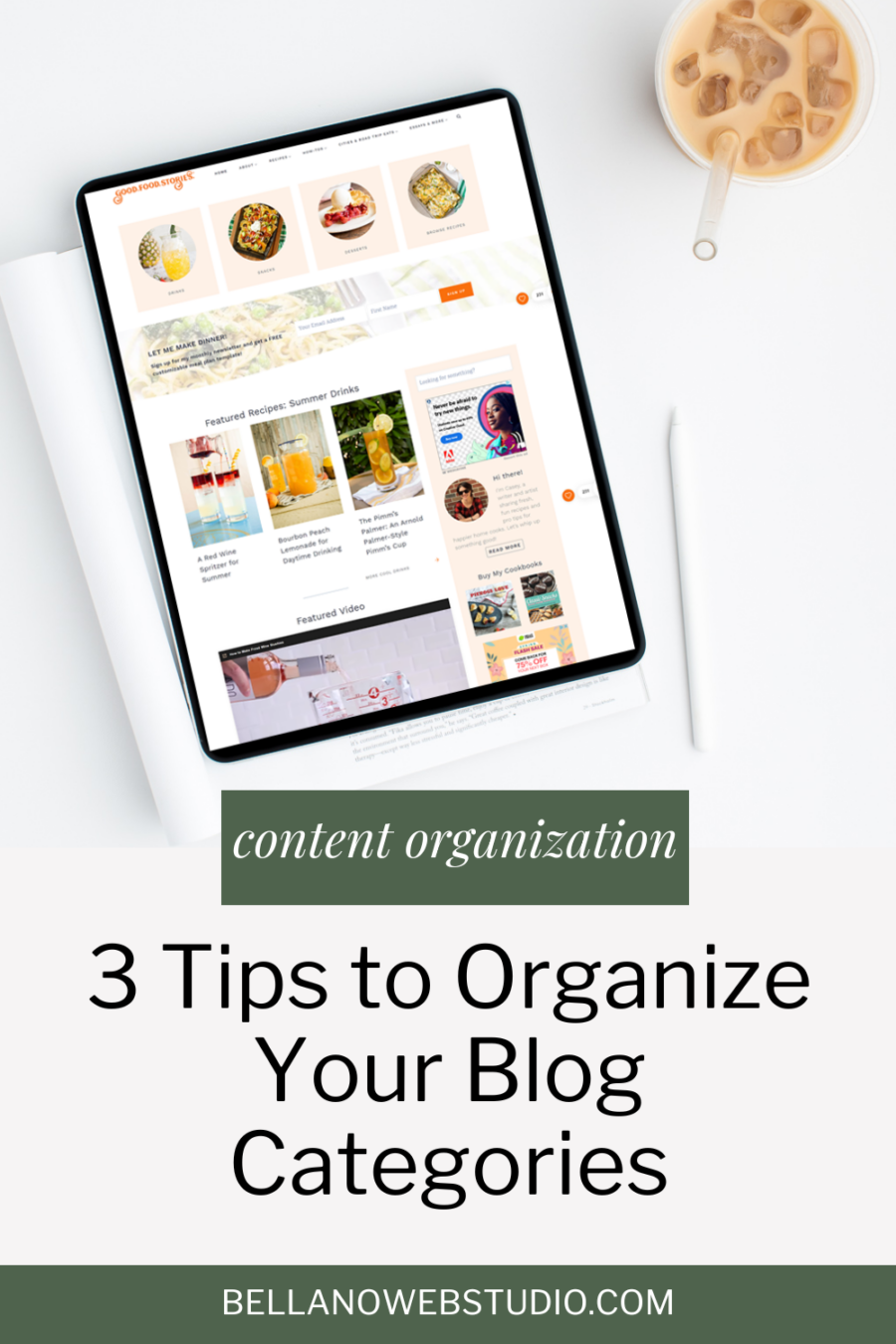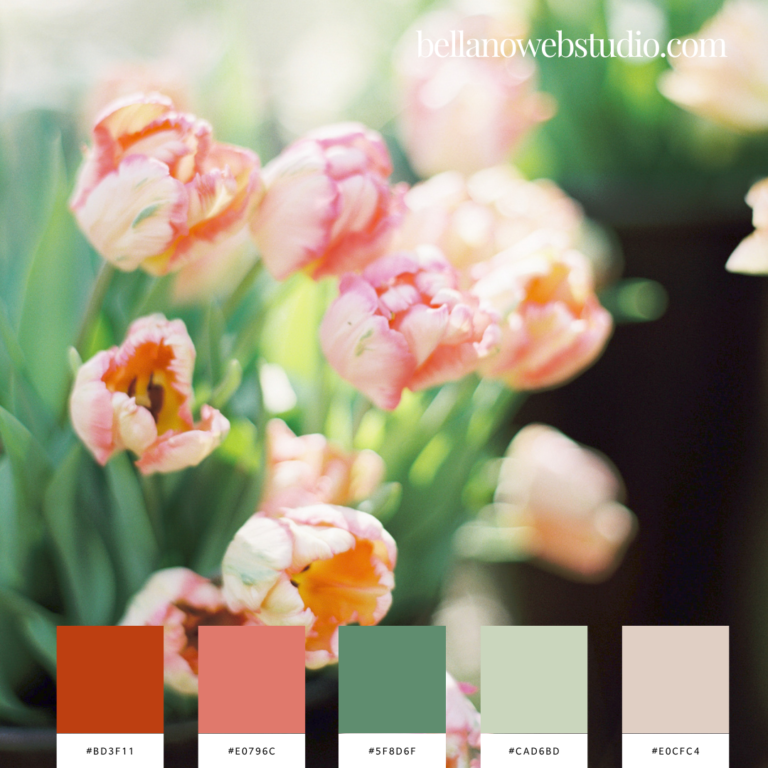3 Tips to Organize Your Blog Categories

Categories are often a source of exasperation or confusion for bloggers. Especially if you’ve been blogging for a while with no clear plan on categories or if you’ve recently migrated from Blogger or another platform to Self-Hosted WordPress (high five on that by the way!).
But fear not dear blogger here are
3 Tips to Organize Your Blog Categories
These tips will help you whip your categories into shape.
I’ve revamped my category structure a few times over the years. And I’ve helped many clients clean up their categories for better organization and navigation.
A good category structure will help your readers find what they are searching for quickly and help with your SEO juice. A bad category structure or no structure can cause frustration and limit engagement with your older posts.
Step 1. Plan your category structure like you are writing an epic novel.
Anna Karenina is one of my favorite epics, it is broken into sections or parts and then each section has chapters. Think of your main categories as the sections of your epic novel.
Your top-level categories should be the broad brush strokes of your content. Remember the keyword here is BROAD. A good category should have many entries. You do not want a category for every slight topic change.
Sub-categories are how the chapters fit into each section. This is where you can get more specific and drill down. However, sub-categories should still be fairly broad and have many posts under each subcategory.
Let’s look at a Food Blog with great category organization for an example.
Casey at Good. Food. Stories. is a food blogger who has been blogging for a long time. Her bread and butter (see what I did there) is recipes, however, she also writes how-to’s (how to make pierogies, how to make a pie crust, etc), and shares recommendations from her travels on where to eat and what to order. She is also a wonderful storyteller and artist.
Even with all that wonderful content under the surface, her navigation is clean and direct. The main sections (top-level categories) of Casey’s epic novel are:
- Recipes
- How-Tos
- Cities & Road Trip Eats
- Essays & More
Her readers know right where to go to find what they are searching for. (Go check it out…I guarantee you’ll find something to make your mouth water.)
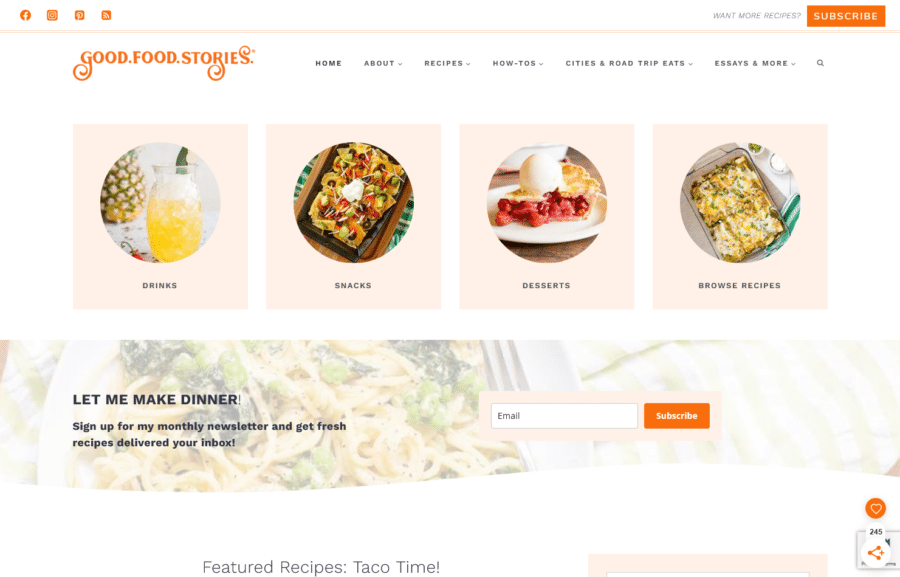
2. Sub-categories: filling in your broad strokes
Let’s take it a step further. Once you have the sections of your epic novel mapped out, you can start filling them in with your chapters, aka your sub-categories.
Let’s use Recipes as an example. Casey’s navigation drop-down displays all the sub-categories under the category (Section) Recipes.
Use your sub-categories to define and refine your content.
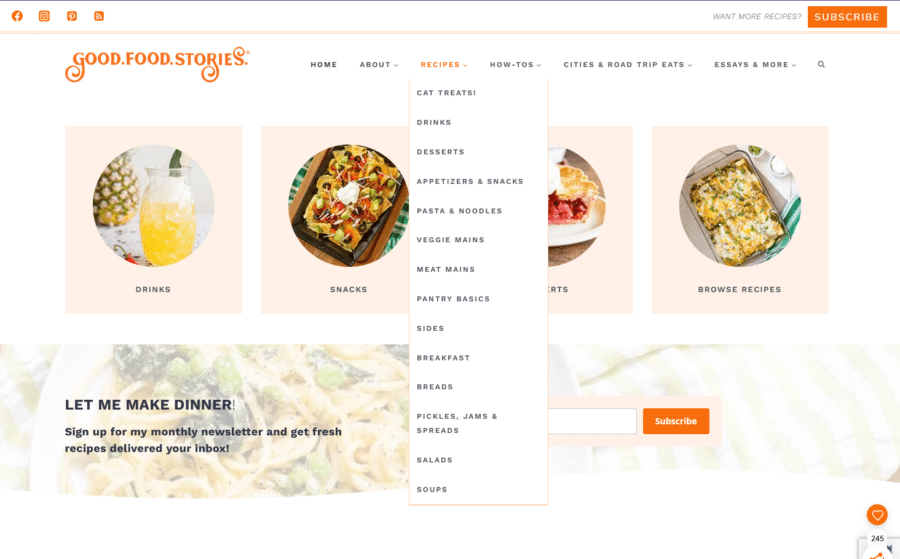
Once you have your structure in place be consistent and never leave a post “uncategorized.” That “uncategorized” category is just there to demonstrate laziness. 🙂 So while you’re at it pop into Settings >> Writing and change the “uncategorized” category to one that you find yourself using most often. Then if you ever forget to add a category you will at least have your basic base covered.
3. Sub-subcategories: Your best friend for that deep content
Oh yes, we can go deeper. Depending on how much content you have and the organic nature of the levels of your subject you may or may not want to go to the sub-subcategory level. But it’s there and it’s so easy to use within WordPress.
Let’s look at Casey’s structure again. She has loads of regional food stories and recommendations and it’s important for her readers to find them easily.
For example, reader Sally is planning a trip to Maine and she’s looking for some good eats while she’s on vacation. She has seen Casey’s post about a few hot spots in Maine but like most of us, can’t remember exactly the names of the restaurants or the dishes.
The sub-subcategories make it a breeze for her to find all the posts Casey has written about Maine and where to find the best Lobster Roll and which neighborhood bar to try out.
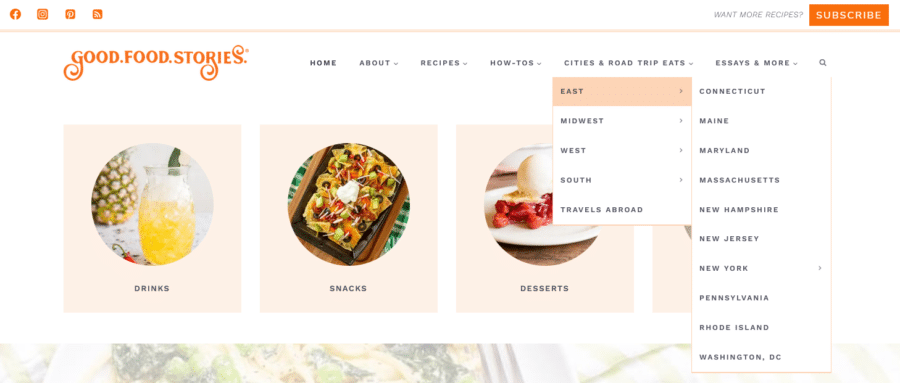
Reader Sally can go right to the category page that has all the reviews on Maine eating listed in one place. Easy peasy, and who doesn’t love that!!
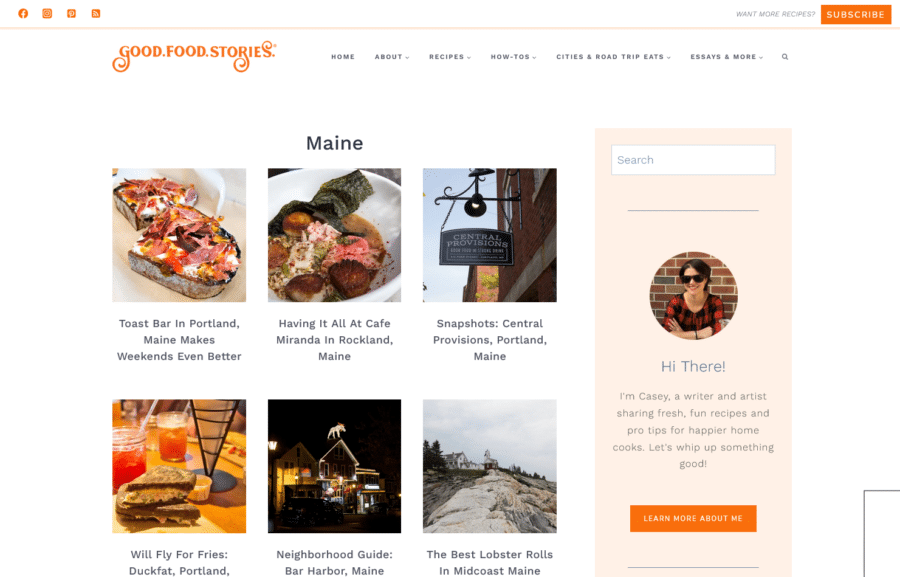
BONUS – CLEAN NAVIGATION!
What do you get for all this category clean-up work?
Navigation that rocks and is so clean and easy that your readers can find what they are looking for in a snap AND probably discover some older gems along the way.
If you are just starting out you may want to stick to only categories but keep this in mind as you grow your content.
The goal is for your reader to be able to find what they are looking for from any page of your site. In a general sense, if they are reading about “Cherry Perogies” and want to look at breakfast recipes it should be easy to find the breakfast category.
I love simple, clean, and easy navigation. If you have a lot of pages as well as categories you can consider having two navigation menus. One for pages and the second for categories works very well and keeps your important topics easy and organized.
Ready to clean up your categories? Check out part 2 for How to Clean Up Your Blog Categories.
Are you ready for a website you love?
If you are ready for a redesign or your first website and the thought of figuring it all out makes your heart race a bit and leaves you overwhelmed I got you covered! My specialty is taking your wish list and blending your personality with the functionality you need for an online presence that makes you proud. Let’s create a stunning first impression and a website where you can stand out online.
Did you find this post helpful?
Share the love and save it to Pinterest!
